 Search by Keyword
|
"I'M SO TIRED"
(John Lennon – Paul McCartney)
John Lennon loved to sleep. "John led a more relaxed suburban life," states Barry Miles in the book "Many Years From Now," "but if he went to dinner in London or to a club, living so far from town meant that he returned home very late. Paul would arrive at midday or the early afternoon and wake him up." As related in this book, John would habitually still be in bed in the early afternoon when Paul arrived at John's home for a pre-arranged songwriting session.
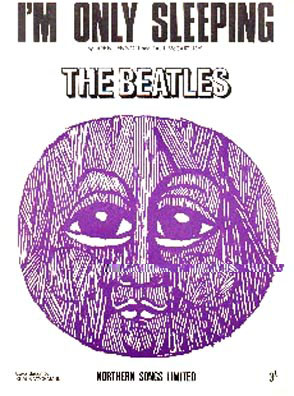 John's love affair with his bed can be detected in a good number of songs he composed during his career, most notably his lazily drifting “I'm Only Sleeping” from The Beatles' 1966 masterpiece “Revolver.” As pointed out by David Quantick in his book “Revolution: The Making Of The Beatles' White Album,” John's “great political gesture was the bed-in, which was done partly for its humor value, partly because, on some level, bed must have appeared to Lennon a much more sensible place to be than Vietnam, and partly because he just liked being in bed. His first solo single, 'Give Peace A Chance,' is one of the few classic songs actually recorded in bed...Like many artistic people who rise late, work late, and value their sleep perhaps a little too much, Lennon was mad for his bed.” John's love affair with his bed can be detected in a good number of songs he composed during his career, most notably his lazily drifting “I'm Only Sleeping” from The Beatles' 1966 masterpiece “Revolver.” As pointed out by David Quantick in his book “Revolution: The Making Of The Beatles' White Album,” John's “great political gesture was the bed-in, which was done partly for its humor value, partly because, on some level, bed must have appeared to Lennon a much more sensible place to be than Vietnam, and partly because he just liked being in bed. His first solo single, 'Give Peace A Chance,' is one of the few classic songs actually recorded in bed...Like many artistic people who rise late, work late, and value their sleep perhaps a little too much, Lennon was mad for his bed.”
So, when someone like John Lennon is put in a situation where he finds it impossible to get some sleep, such as during his months-long trip to India to study spirituality and practice meditation, what would be his reaction to this insomnia?
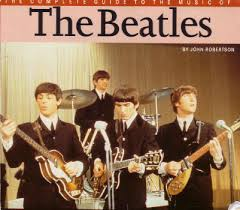 “One of his most direct songs,” says John Robertson in his book “The Complete Guide To The Music Of The Beatles” about John's song “I'm So Tired.” “Lennon's delivery works itself into anger, his resignation rising to hostility,” says Tim Riley in his book “Tell Me Why,” adding that “the hung-over pace of the players sounds as though they're trying to get through the track without knocking anything over.” David Quantick describes it as “a perfect exercise in mood, pace, and melody,” also saying that it's “the only song ever written that manages not only to musically describe insomnia, but to also make it sound entertaining.” “One of his most direct songs,” says John Robertson in his book “The Complete Guide To The Music Of The Beatles” about John's song “I'm So Tired.” “Lennon's delivery works itself into anger, his resignation rising to hostility,” says Tim Riley in his book “Tell Me Why,” adding that “the hung-over pace of the players sounds as though they're trying to get through the track without knocking anything over.” David Quantick describes it as “a perfect exercise in mood, pace, and melody,” also saying that it's “the only song ever written that manages not only to musically describe insomnia, but to also make it sound entertaining.”
Songwriting History
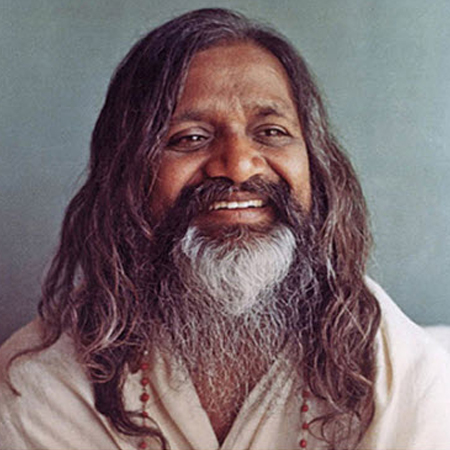 On February 16th, 1968, John Lennon and George Harrison arrived at the ashram in Rishekesh, India with their wives to begin their extensive retreat with the Maharishi Mahesh Yogi to practice meditation, the other Beatles arriving shortly afterwards. During their stay, the group naturally used some of their off time to write songs that would eventually be included on their next album, which they would begin recording when they returned. Many of the songs they composed during this trip were based on experiences or events that occurred there, "I'm So Tired" being no exception. On February 16th, 1968, John Lennon and George Harrison arrived at the ashram in Rishekesh, India with their wives to begin their extensive retreat with the Maharishi Mahesh Yogi to practice meditation, the other Beatles arriving shortly afterwards. During their stay, the group naturally used some of their off time to write songs that would eventually be included on their next album, which they would begin recording when they returned. Many of the songs they composed during this trip were based on experiences or events that occurred there, "I'm So Tired" being no exception.
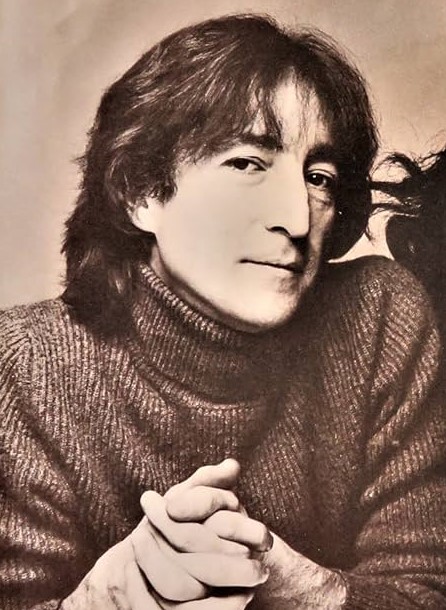 "I wrote it in India," John stated in 1980. "I couldn't sleep. I'd been meditating all day and then I couldn't sleep at night. We were not supposed to leave the room because of this thing about staying in one room for five days. So I was so tired I couldn't get to sleep. That's it." "I wrote it in India," John stated in 1980. "I couldn't sleep. I'd been meditating all day and then I couldn't sleep at night. We were not supposed to leave the room because of this thing about staying in one room for five days. So I was so tired I couldn't get to sleep. That's it."
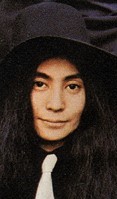 Upon examining the lyrics, however, there seems to be a little more to it than that. John had already begun to forge a strong friendship with artist Yoko Ono before they left for India. He was with his wife Cynthia on this trip, but he was missing Yoko tremendously while away. They had yet to start their affair, but he viewed Yoko as a 'kindred spirit' of sorts and wished that somehow he could have brought her along with him, although he knew that would have been more than awkward. These thoughts show up prominently in the lyrics, addressing Yoko directly: “My mind is set on you. I wonder, should I call you, but I know what you would do. You'd say I'm putting you on...I'd give you everything I've got for a little piece of mind.” Upon examining the lyrics, however, there seems to be a little more to it than that. John had already begun to forge a strong friendship with artist Yoko Ono before they left for India. He was with his wife Cynthia on this trip, but he was missing Yoko tremendously while away. They had yet to start their affair, but he viewed Yoko as a 'kindred spirit' of sorts and wished that somehow he could have brought her along with him, although he knew that would have been more than awkward. These thoughts show up prominently in the lyrics, addressing Yoko directly: “My mind is set on you. I wonder, should I call you, but I know what you would do. You'd say I'm putting you on...I'd give you everything I've got for a little piece of mind.”
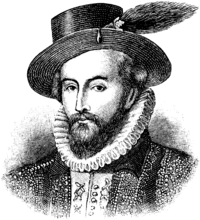 Did Paul have any contribution to this “Lennon / McCartney” composition? “'So Tired' is very much John's comment to the world,” Paul writes in the book “Many Years From Now,” adding, “and it has that very special line, 'And curse Sir Walter Raleigh, he was such a stupid git.' That's a classic line and it's so John that there's no doubt that he wrote it. I think it's 100 per cent John. Being tired was one of his themes, he wrote 'I'm Only Sleeping.' I think we were all pretty tired but he chose to write about it.” Actually, “Sir Walter Raleigh,” the man known for popularizing tobacco in England, bringing Virginian tobacco from America in the 16th Century, was referred to by John as a “get.” This word is the Liverpool pronunciation of the popular British insult “git” (as included in the title of the popular Monkees song “Randy Scouse Git”) which means an unpleasant or contemptible person. All of the unfortunate ones affected negatively from their use of tobacco through the years will no doubt agree with Lennon's assessment of the man responsible for making it so readily available, John himself sickened by his own smoking habit. Secondly, the word "get" rhymed with "cigarette," which was also handy. Did Paul have any contribution to this “Lennon / McCartney” composition? “'So Tired' is very much John's comment to the world,” Paul writes in the book “Many Years From Now,” adding, “and it has that very special line, 'And curse Sir Walter Raleigh, he was such a stupid git.' That's a classic line and it's so John that there's no doubt that he wrote it. I think it's 100 per cent John. Being tired was one of his themes, he wrote 'I'm Only Sleeping.' I think we were all pretty tired but he chose to write about it.” Actually, “Sir Walter Raleigh,” the man known for popularizing tobacco in England, bringing Virginian tobacco from America in the 16th Century, was referred to by John as a “get.” This word is the Liverpool pronunciation of the popular British insult “git” (as included in the title of the popular Monkees song “Randy Scouse Git”) which means an unpleasant or contemptible person. All of the unfortunate ones affected negatively from their use of tobacco through the years will no doubt agree with Lennon's assessment of the man responsible for making it so readily available, John himself sickened by his own smoking habit. Secondly, the word "get" rhymed with "cigarette," which was also handy.
Many speculate that John's line "I wonder should I get up and fix myself a drink" followed afterward with "no, no, no" indicates how the Maharishi forbid those on the retreat in India to use substances to alter the mind. While the Maharishi did encourage abstinence of drugs and alcohol, whether John was actually referring to this in this lyric has not been verified.
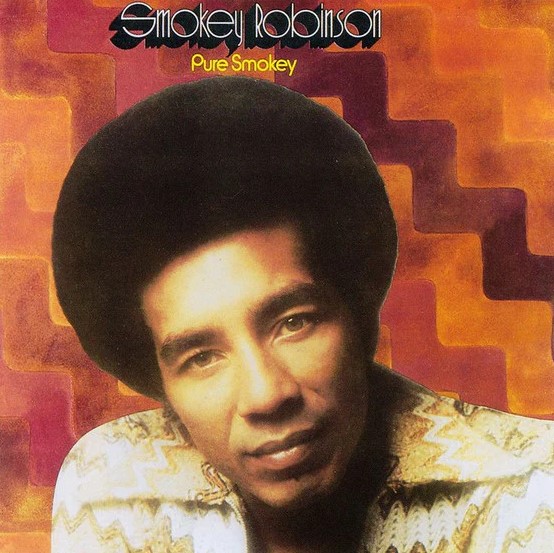 There were some slight differences in the lyrics as originally conceived by John as desciphered from his handwritten lyric sheet, which he labelled as the #12 song he had written while in India (see below). One slight lyrical difference was the line "I'd give you all I've got if you gimme little piece of mind," while another difference was, "Although I choked, I'll have another cigarette, and blame Sir Walter Raleigh," as written on the second sheet of lyrics replicated in the book included in the Super Deluxe "White Album" box set released in 2018. Interestingly, John wrote at the top of the page an instructional reminder of how he wanted the song to be sung: "Smokey then heavy voice." Apparently he wanted the verses to emulate one of his idols, Smokey Robinson, while the choruses he wanted to sing loudly. There were some slight differences in the lyrics as originally conceived by John as desciphered from his handwritten lyric sheet, which he labelled as the #12 song he had written while in India (see below). One slight lyrical difference was the line "I'd give you all I've got if you gimme little piece of mind," while another difference was, "Although I choked, I'll have another cigarette, and blame Sir Walter Raleigh," as written on the second sheet of lyrics replicated in the book included in the Super Deluxe "White Album" box set released in 2018. Interestingly, John wrote at the top of the page an instructional reminder of how he wanted the song to be sung: "Smokey then heavy voice." Apparently he wanted the verses to emulate one of his idols, Smokey Robinson, while the choruses he wanted to sing loudly.
 We know that the song was completely written as of May 28th, 1968, since the demo that John recorded on that day shows the song in its complete form, lyrics and all. However, we appear to be able to pinpoint with much more accuracy when exactly during his India trip John actually completed the song. “You know, it's three weeks, I'm going insane,” John sings during the chorus. If this was literally true, three weeks into his stay in India would be precisely March 9th, 1968. Although the song could very well have been written a little later, recalling his recent experience with insomnia, we can comfortably say he wrote the song sometime in March of that year. We know that the song was completely written as of May 28th, 1968, since the demo that John recorded on that day shows the song in its complete form, lyrics and all. However, we appear to be able to pinpoint with much more accuracy when exactly during his India trip John actually completed the song. “You know, it's three weeks, I'm going insane,” John sings during the chorus. If this was literally true, three weeks into his stay in India would be precisely March 9th, 1968. Although the song could very well have been written a little later, recalling his recent experience with insomnia, we can comfortably say he wrote the song sometime in March of that year.
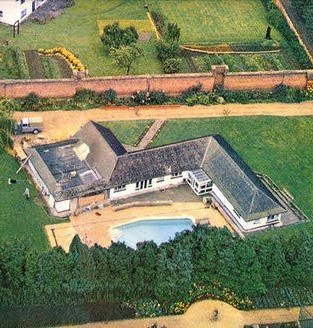
"Kinfauns"
Recording History
As mentioned above, John recorded a demo version of "I'm So Tired" at George Harrison's 'Kinfauns' home in Surrey on May 28th, 1968 on an Ampex 4-track machine. The Beatles met on this day as well as the following day to record demos of the songs they'd recently written in preparation for officially recording them in EMI Studios, these sessions beginning on May 30th.
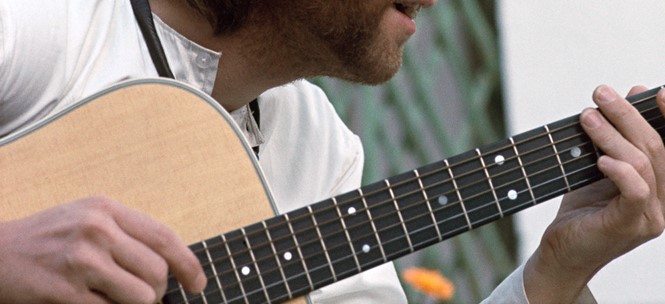 John plays acoustic guitar and sings, double-tracking both his vocals and guitar afterward. We also hear maracas, a tambourine, and clinking percussion sounds played by other Beatles, as well as Paul adding some “woooo”s and other backing vocals here and there. This demo recording is substantially longer than the finished version, John repeating the first verse after the third verse is sung as well as adding yet another additional verse followed by a third chorus. John plays acoustic guitar and sings, double-tracking both his vocals and guitar afterward. We also hear maracas, a tambourine, and clinking percussion sounds played by other Beatles, as well as Paul adding some “woooo”s and other backing vocals here and there. This demo recording is substantially longer than the finished version, John repeating the first verse after the third verse is sung as well as adding yet another additional verse followed by a third chorus.
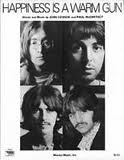 This final verse, undoubtedly intended to be used for a solo of some kind, included the following ad libbed vocal recitation from John for the time being: “When I hold you in your arms, when you show me each one of your charms, I wonder should I get up and go to the funny farm.” The first phrase of this recitation ended up becoming a striking feature of another of John's “White Album” songs, namely “Happiness Is A Warm Gun.” The demo of “I'm So Tired” ends with five repeats of the phrase “I'd give you everything I've got for a little piece of mind” instead of three on the finished recording, this followed by John stating “I'll give you all I've got, Derek!,” possibly addressed to press officer Derek Taylor who may have been present at 'Kinfauns' on this day. This final verse, undoubtedly intended to be used for a solo of some kind, included the following ad libbed vocal recitation from John for the time being: “When I hold you in your arms, when you show me each one of your charms, I wonder should I get up and go to the funny farm.” The first phrase of this recitation ended up becoming a striking feature of another of John's “White Album” songs, namely “Happiness Is A Warm Gun.” The demo of “I'm So Tired” ends with five repeats of the phrase “I'd give you everything I've got for a little piece of mind” instead of three on the finished recording, this followed by John stating “I'll give you all I've got, Derek!,” possibly addressed to press officer Derek Taylor who may have been present at 'Kinfauns' on this day.
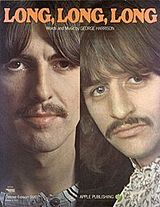 After well over four months of recording the “White Album,” with less than a week to go before the deadline for the finished album arrived, The Beatles finally got around to officially recording John's “I'm So Tired” for the album. In a marathon recording session on October 8th, 1968, the group entered EMI Studio Two at around 4 pm with the intention of fully recording two John Lennon compositions, these being “I'm So Tired” and “The Continuing Story Of Bungalow Bill.” First on the agenda, though, was adding some overdubs to George's song “Long Long Long” which had begun the previous day. With this complete, John was caught on tape exerting his authority and whipping the boys up for recording his two new songs. “Quick, quick, the red light's on, let's go, let's make a record!” he can be heard demanding on the session tapes for this day. After well over four months of recording the “White Album,” with less than a week to go before the deadline for the finished album arrived, The Beatles finally got around to officially recording John's “I'm So Tired” for the album. In a marathon recording session on October 8th, 1968, the group entered EMI Studio Two at around 4 pm with the intention of fully recording two John Lennon compositions, these being “I'm So Tired” and “The Continuing Story Of Bungalow Bill.” First on the agenda, though, was adding some overdubs to George's song “Long Long Long” which had begun the previous day. With this complete, John was caught on tape exerting his authority and whipping the boys up for recording his two new songs. “Quick, quick, the red light's on, let's go, let's make a record!” he can be heard demanding on the session tapes for this day.
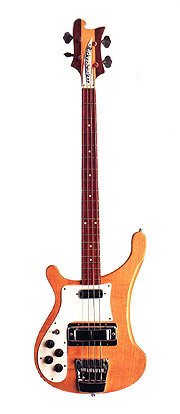 The group decided to tackle “I'm So Tired” first, beginning roughly at around 6 pm. The basic rhythm track was recorded onto the first four tracks of the eight-track tape, this consisting of Paul's bass on track one, Ringo's drums on track two, John and George's electric guitars on track three, and John's lead vocal on track four. John's vocal was not just considered a guide vocal that would be improved upon later, as had been their usual procedure as of late, but was intended as what would be heard on the finished recording, John making sure he alternated beween singing like Smokey Robinson and then in a heavy voice like he instructed himself on his original lyric sheet. The group decided to tackle “I'm So Tired” first, beginning roughly at around 6 pm. The basic rhythm track was recorded onto the first four tracks of the eight-track tape, this consisting of Paul's bass on track one, Ringo's drums on track two, John and George's electric guitars on track three, and John's lead vocal on track four. John's vocal was not just considered a guide vocal that would be improved upon later, as had been their usual procedure as of late, but was intended as what would be heard on the finished recording, John making sure he alternated beween singing like Smokey Robinson and then in a heavy voice like he instructed himself on his original lyric sheet.
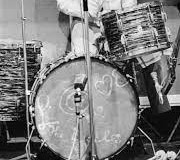 Of the 14 takes it took to get it down to John's satisfaction, "take three" begins with John stating, "OK, this is it" before counting the song down. After "take six," John exclaims, "Oh, it's so complicated. How was anybody else, you see? 'Cause I was better singing on the previous one. OK, do it again. It's just that there's all them to choose from then." Their next attempt, "take seven," is included in the Super Deluxe edition of the 50th Anniversary "White Album" box set, which shows Ringo going into double-time for the first chorus, George experimenting with a couple lead guitar fills to fill in gaps in John's lyrics, and John attempting a higher register vocally for the concluding lyric of the song. The take concludes with John saying, "If you think it was good, keep it. If you don't, scrap it." "Take nine," as partially heard on the compilation album “Anthology 3,” shows how they had been refining their performance to near perfection, with the exception of the tempo increasing a little more than originally intended. Before "Take 14," John instructs, "OK, we'll do it again. Try and leave those spaces, Paul, 'cause it's all, at remix you'll have to pull it all out." This take, "take 14," became the keeper, onto which they had four more tracks of the tape available for overdubs. Of the 14 takes it took to get it down to John's satisfaction, "take three" begins with John stating, "OK, this is it" before counting the song down. After "take six," John exclaims, "Oh, it's so complicated. How was anybody else, you see? 'Cause I was better singing on the previous one. OK, do it again. It's just that there's all them to choose from then." Their next attempt, "take seven," is included in the Super Deluxe edition of the 50th Anniversary "White Album" box set, which shows Ringo going into double-time for the first chorus, George experimenting with a couple lead guitar fills to fill in gaps in John's lyrics, and John attempting a higher register vocally for the concluding lyric of the song. The take concludes with John saying, "If you think it was good, keep it. If you don't, scrap it." "Take nine," as partially heard on the compilation album “Anthology 3,” shows how they had been refining their performance to near perfection, with the exception of the tempo increasing a little more than originally intended. Before "Take 14," John instructs, "OK, we'll do it again. Try and leave those spaces, Paul, 'cause it's all, at remix you'll have to pull it all out." This take, "take 14," became the keeper, onto which they had four more tracks of the tape available for overdubs.
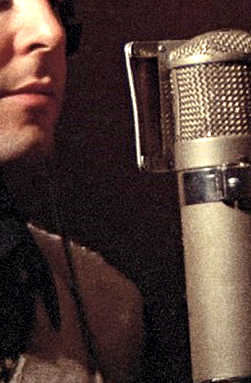 The Beatles immediately filled these other tracks with overdubs, all of which can be heard in the Super Deluxe edition of the "White Album" mentioned above. Track five of the eight-track tape contains John, Paul and George singing "oh!" harmonies in the first verse during the line "I wonder should I get up and fix myself a drink," this being omited from the final mix. Also on this track was John double tracking his vocals on the first verse's final word "do" along with Paul and himself adding harmonies in the choruses. The Beatles immediately filled these other tracks with overdubs, all of which can be heard in the Super Deluxe edition of the "White Album" mentioned above. Track five of the eight-track tape contains John, Paul and George singing "oh!" harmonies in the first verse during the line "I wonder should I get up and fix myself a drink," this being omited from the final mix. Also on this track was John double tracking his vocals on the first verse's final word "do" along with Paul and himself adding harmonies in the choruses.
 Curiously, also included on track five, John adds in mumbled gibberish whenever there is a break in the music, these occurances being between the first chorus and second verse, during the two drum breaks at the end of the second chorus, and at the very end of the song. Mark Lewisohn's book "The Beatles Recording Sessions" explains this final bit of Lennon mumbling as "Monsieur, monsieur, how about another one?", insinuating that he was requesting another attempt at the backing vocals. This final mumbling was the only one that made it onto the finished mix. Humorously, in late 1969, many who were hungry for clues to Paul's rumored death insisted that, when played backwards, John was saying "Paul is dead, miss him, miss him, miss him!" This made for a spooky but mistaken story and, in effect, ruined a lot of record player needles in the process. Curiously, also included on track five, John adds in mumbled gibberish whenever there is a break in the music, these occurances being between the first chorus and second verse, during the two drum breaks at the end of the second chorus, and at the very end of the song. Mark Lewisohn's book "The Beatles Recording Sessions" explains this final bit of Lennon mumbling as "Monsieur, monsieur, how about another one?", insinuating that he was requesting another attempt at the backing vocals. This final mumbling was the only one that made it onto the finished mix. Humorously, in late 1969, many who were hungry for clues to Paul's rumored death insisted that, when played backwards, John was saying "Paul is dead, miss him, miss him, miss him!" This made for a spooky but mistaken story and, in effect, ruined a lot of record player needles in the process.
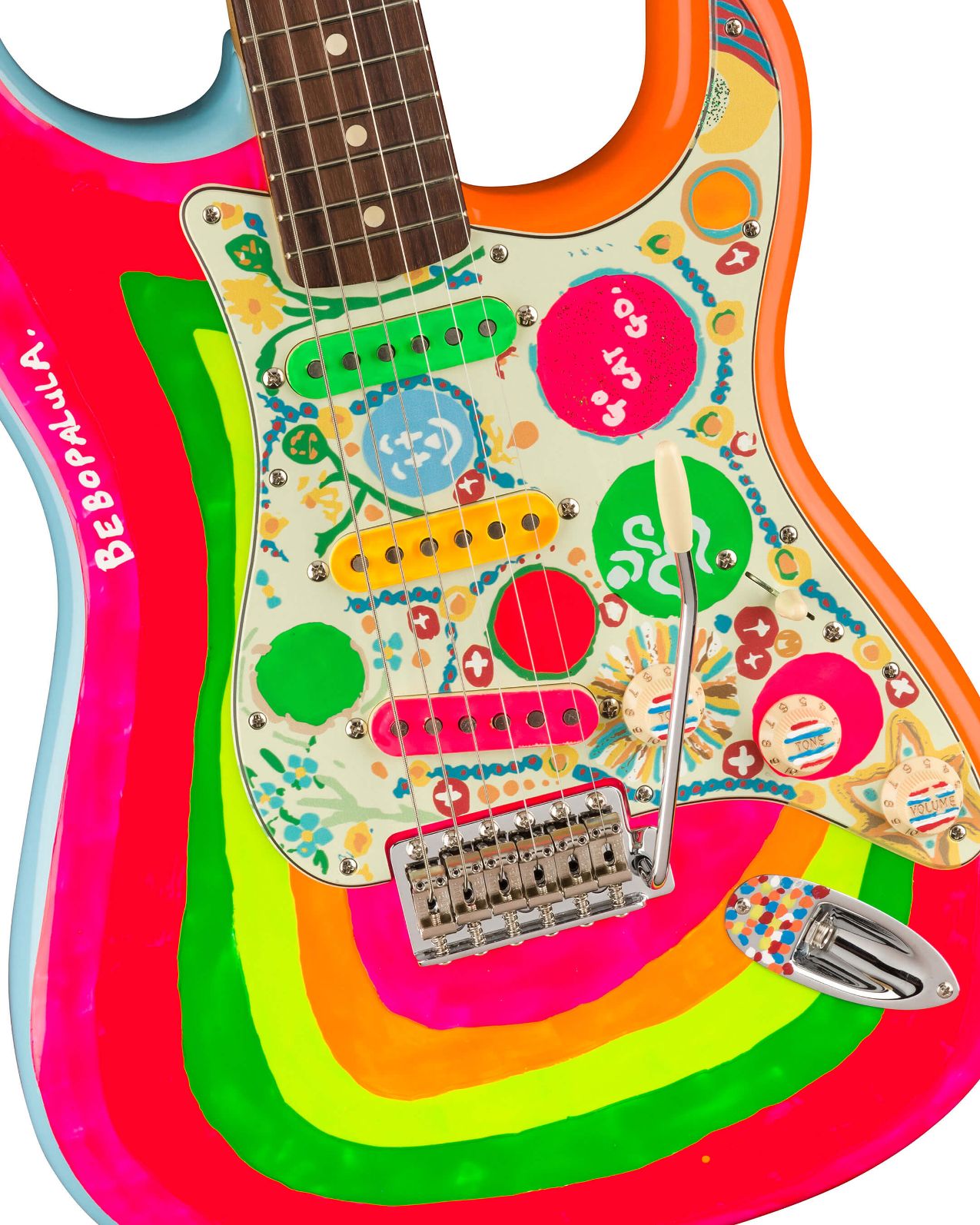 Track six of the tape contains Paul on electric piano, George on some additional rhythm guitar, and Ringo on drums during the choruses. According to "The Beatles Recording Sessions," track seven contains yet more drums from Ringo on the choruses, while track eight contains overdubs of John on organ and George playing what the original tape box describes as "far-off" guitar leads that fill in the gaps left by John's vocals. Track six of the tape contains Paul on electric piano, George on some additional rhythm guitar, and Ringo on drums during the choruses. According to "The Beatles Recording Sessions," track seven contains yet more drums from Ringo on the choruses, while track eight contains overdubs of John on organ and George playing what the original tape box describes as "far-off" guitar leads that fill in the gaps left by John's vocals.
By around 4 am the following morning, “I'm So Tired” was complete to the satisfaction of John. “One of my favorite tracks,” he stated when interviewed, adding “I just like the sound of it, and I sing it well.” They then began and finished “The Continuing Story Of Bungalow Bill” before the session was over at 8 am.
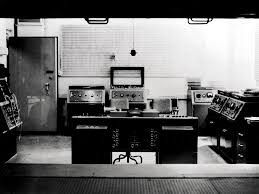 Both the stereo and mono mixes of “I'm So Tired” were created a week later, October 15th, 1968, by the engineering team of George Martin, Ken Scott and John Smith in the control room of EMI Studio Two. A decision was made to take out a good portion of John's organ and most of George's lead guitar fills in both mixes, as well as most of John's mumbling. It took five tries to perfect the stereo mix and three tries to get a usable mono mix. The mono mix emphasizes Paul's backing vocals in the choruses much more prominently than the stereo mix. Both the stereo and mono mixes of “I'm So Tired” were created a week later, October 15th, 1968, by the engineering team of George Martin, Ken Scott and John Smith in the control room of EMI Studio Two. A decision was made to take out a good portion of John's organ and most of George's lead guitar fills in both mixes, as well as most of John's mumbling. It took five tries to perfect the stereo mix and three tries to get a usable mono mix. The mono mix emphasizes Paul's backing vocals in the choruses much more prominently than the stereo mix.
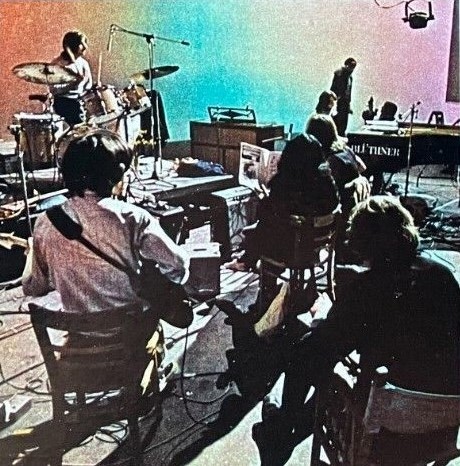 On January 3rd, 1969, The Beatles ran through an interesting version of the song at Twickenham Film Studios in London during rehearsals for what became the “Let It Be” movie. Committed to tape on this day was a full version of “I'm So Tired” with Paul on vocals, humorously imitating John's singing. After the line “get myself a drink, no, no, no,” Paul adds “lay off the booze, boy!” Paul even tries to imitate John's mumbling at the end of the song: “emesegeh, megasegeh, emeh, emehsegeh, emeh....” On January 3rd, 1969, The Beatles ran through an interesting version of the song at Twickenham Film Studios in London during rehearsals for what became the “Let It Be” movie. Committed to tape on this day was a full version of “I'm So Tired” with Paul on vocals, humorously imitating John's singing. After the line “get myself a drink, no, no, no,” Paul adds “lay off the booze, boy!” Paul even tries to imitate John's mumbling at the end of the song: “emesegeh, megasegeh, emeh, emehsegeh, emeh....”
Sometime early in 1996, George Martin and engineer Geoff Emerick returned to the master tapes of October 8th, 1968 to combine the best parts of "take three," "take six" and "take nine" of the rhythm track The Beatles recorded for “I'm So Tired” to include in the compilation album “Anthology 3."
 Then, sometime in 2018, George Martin's son Giles Marin, along with engineer Sam Okell, returned to the master tapes to create a vibrant new stereo mix of the song for inclusion in the various editions of the 50th Anniversary of the "White Album." One noticeable difference in this mix is the decreased volume of John's mumbling at the end of the song. While they were at it, George Martin and Sam Okell also created a stereo mix of the original Esher demo The Beatles made in May of 1968, as well as mixes of "take seven" and all eight tracks of "take 14" as recorded in EMI Studios on October 8th, 1968. Then, sometime in 2018, George Martin's son Giles Marin, along with engineer Sam Okell, returned to the master tapes to create a vibrant new stereo mix of the song for inclusion in the various editions of the 50th Anniversary of the "White Album." One noticeable difference in this mix is the decreased volume of John's mumbling at the end of the song. While they were at it, George Martin and Sam Okell also created a stereo mix of the original Esher demo The Beatles made in May of 1968, as well as mixes of "take seven" and all eight tracks of "take 14" as recorded in EMI Studios on October 8th, 1968.
Song Structure and Style
Unlike the previous two "White Album" tracks, "I'm So Tired" has a very standard format, this being 'verse/ verse/ chorus/ verse/ chorus' (or aabab). John chose to omit a couple of verses and a chorus from the demo he recorded back in May of 1968, his succinct message not needing to be repeated or drawn out any further.
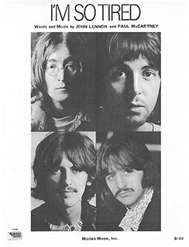 The first verse, like all three verses, is seven measures long, all of which are in a plodding 4/4 time signature except for measure six which is in 2/4. The first measure is introduced by an ascending three-note guitar figure from John's guitar which then continues through the verse playing a sleepy chord pattern along with George's guitar. John sings lead mostly single-tracked throughout while Paul and Ringo hold down the rhythm end of the song, all performing at a convincingly insomniatic pace suitable to the lyrics. The first verse only includes elements from the original rhythm track, so therefore what we hear is actually performed live in the studio with no overdubs. The first verse, like all three verses, is seven measures long, all of which are in a plodding 4/4 time signature except for measure six which is in 2/4. The first measure is introduced by an ascending three-note guitar figure from John's guitar which then continues through the verse playing a sleepy chord pattern along with George's guitar. John sings lead mostly single-tracked throughout while Paul and Ringo hold down the rhythm end of the song, all performing at a convincingly insomniatic pace suitable to the lyrics. The first verse only includes elements from the original rhythm track, so therefore what we hear is actually performed live in the studio with no overdubs.
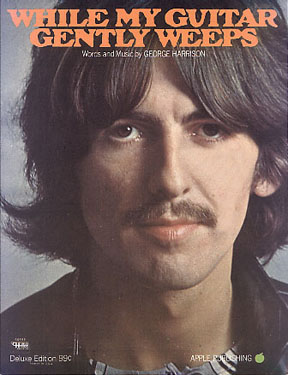 The second verse begins immediately afterward which is similarly performed throughout, with a couple exceptions in measures five through seven. John's vocals raise out of his lethargic state into one of irritation on the line “I wonder should I call you, but I know what you would do.” Also during these measures we hear John's overdubbed organ kick in, which has been treated with the manual “wobble” effect of ADT (Artificial Double Tracking) as done on Eric Clapton's guitar work on “While My Guitar Gently Weeps.” The second verse begins immediately afterward which is similarly performed throughout, with a couple exceptions in measures five through seven. John's vocals raise out of his lethargic state into one of irritation on the line “I wonder should I call you, but I know what you would do.” Also during these measures we hear John's overdubbed organ kick in, which has been treated with the manual “wobble” effect of ADT (Artificial Double Tracking) as done on Eric Clapton's guitar work on “While My Guitar Gently Weeps.”
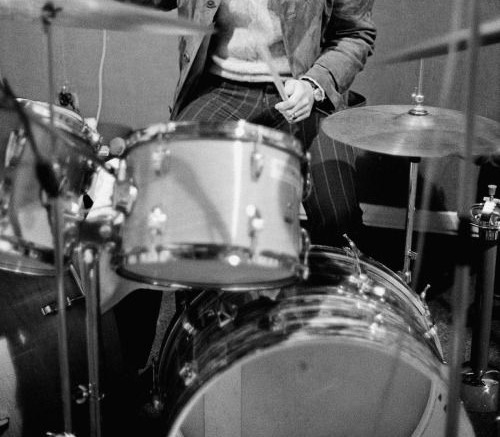 Next comes the first chorus which is six measures long, all of which are in 4/4 time. On top of the original rhythm track are John's organ holding out single chords, John and Paul's backing vocals (Paul performing a higher harmony), and Ringo's overdubbed drum work, most notable because of the snare accents. The intensity of the chorus builds as it progresses, until it climaxes in the fifth measure with the line “I'd give you everything I've got for a little piece of mind.” As this last word is sung, the sixth measure begins with all instrumentation dropping off entirely. The second half of the last measure brings in the subtle guitar introduction heard at the beginning of the song as a segue into the third verse that follows. Next comes the first chorus which is six measures long, all of which are in 4/4 time. On top of the original rhythm track are John's organ holding out single chords, John and Paul's backing vocals (Paul performing a higher harmony), and Ringo's overdubbed drum work, most notable because of the snare accents. The intensity of the chorus builds as it progresses, until it climaxes in the fifth measure with the line “I'd give you everything I've got for a little piece of mind.” As this last word is sung, the sixth measure begins with all instrumentation dropping off entirely. The second half of the last measure brings in the subtle guitar introduction heard at the beginning of the song as a segue into the third verse that follows.
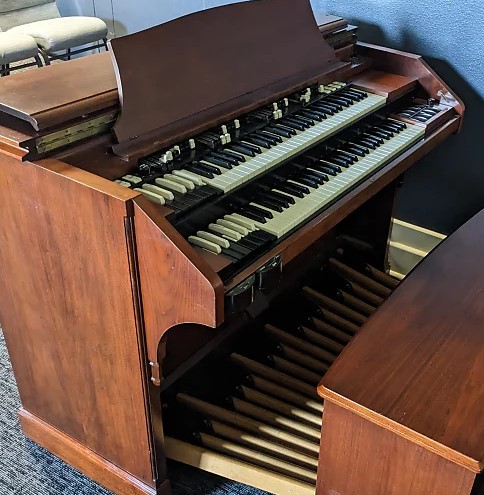 This third verse is very similar to the second verse in that it consists of the original rhythm track recording with John's Hammond organ overdub being faded in again in the fifth through seventh measures. One additional element here is a small trace of George's lead guitar doodling from the rhythm track which is heard in the seventh measure after the highly emphasized word "get." In earlier takes, such as "take seven" as heard on the Super Deluxe 50th Anniversay "White Album" box set, George performs this guitar lick masterfully, while he doesn't quite perfect it for the released version. This third verse is very similar to the second verse in that it consists of the original rhythm track recording with John's Hammond organ overdub being faded in again in the fifth through seventh measures. One additional element here is a small trace of George's lead guitar doodling from the rhythm track which is heard in the seventh measure after the highly emphasized word "get." In earlier takes, such as "take seven" as heard on the Super Deluxe 50th Anniversay "White Album" box set, George performs this guitar lick masterfully, while he doesn't quite perfect it for the released version.
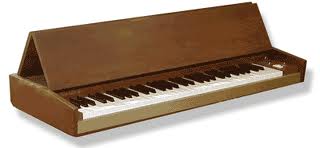 This goes directly into the second and final chorus which, this time, is ten measures long given that measures five and six are repeated two more times for emphasis before the song comes to a startling finish. All elements of the previous chorus are heard here as well with the addition of yet another drum overdub, Ringo accenting the snare drum with sixteenth notes. Therefore, there are actually three Ringos playing during this chorus, his performance during the rhythm track, an identical drum pattern overdub, and then the above mentioned snare drum overdub. Also discernible here is Paul's Hohner Pianet which can be subtly heard as a backdrop throughout. This goes directly into the second and final chorus which, this time, is ten measures long given that measures five and six are repeated two more times for emphasis before the song comes to a startling finish. All elements of the previous chorus are heard here as well with the addition of yet another drum overdub, Ringo accenting the snare drum with sixteenth notes. Therefore, there are actually three Ringos playing during this chorus, his performance during the rhythm track, an identical drum pattern overdub, and then the above mentioned snare drum overdub. Also discernible here is Paul's Hohner Pianet which can be subtly heard as a backdrop throughout.
 The last climactic phrase is here repeated three times, the first two times followed by a 'Beatles break' with minimal else going on. During the first break, all that is heard is a simple drum fill from Ringo. During the second break, Ringo plays a more elaborate drum fill accompanied by three guitar chops and a thumb-roll from Paul on the electric pianet. Then after the third vocal phrase is heard, everything drops off completely, the only thing left to hear being John's mumbly request for another take of the background vocal track, which apparently didn't happen since this request was captured on the take they kept. The last climactic phrase is here repeated three times, the first two times followed by a 'Beatles break' with minimal else going on. During the first break, all that is heard is a simple drum fill from Ringo. During the second break, Ringo plays a more elaborate drum fill accompanied by three guitar chops and a thumb-roll from Paul on the electric pianet. Then after the third vocal phrase is heard, everything drops off completely, the only thing left to hear being John's mumbly request for another take of the background vocal track, which apparently didn't happen since this request was captured on the take they kept.
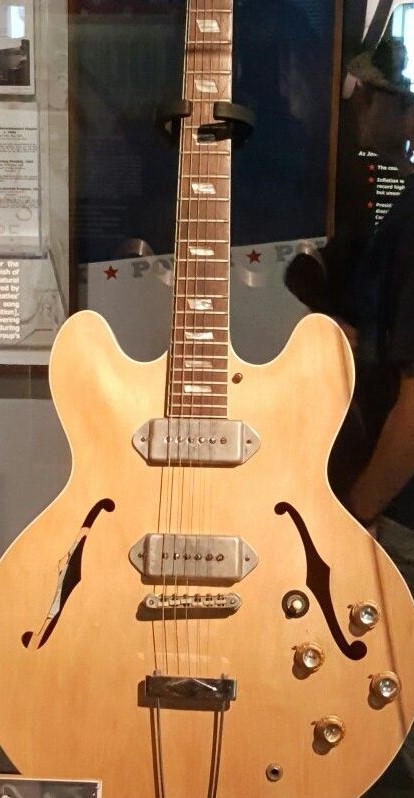 The performance from all four Beatles was very compelling, depicting an angry insomniac at the point of desperation. It was accurately portrayed, undoubtedly, because of the actual lateness of the hour when the song was recorded, them not finishing until about 4 am in the morning (with four more hours to go, mind you, since they immediately continued on with “The Continuing Story Of Bungalow Bill”). Lennon hit the nail on the head vocally and instrumentally, while both Paul and Ringo contributed stellar performances. George's overdubbed guitar flourishes were omitted, but his rhythm guitar during the choruses did help create the thick feel that John wanted for the song. The performance from all four Beatles was very compelling, depicting an angry insomniac at the point of desperation. It was accurately portrayed, undoubtedly, because of the actual lateness of the hour when the song was recorded, them not finishing until about 4 am in the morning (with four more hours to go, mind you, since they immediately continued on with “The Continuing Story Of Bungalow Bill”). Lennon hit the nail on the head vocally and instrumentally, while both Paul and Ringo contributed stellar performances. George's overdubbed guitar flourishes were omitted, but his rhythm guitar during the choruses did help create the thick feel that John wanted for the song.
American Releases
November 25th, 1968, was the official release date of the "White Album" in the US. "I'm So Tired" was placed in the somewhat flattering position of 2nd song on side two of the two album set. It first appeared on compact disc on August 24th, 1987, then as a special 30th Anniversary release on November 23rd, 1998, and then as a remastered CD set on October 9th, 2009. Since the original US vinyl release in 1968 was only in stereo, a mono vinyl set wasn't released in America until November 9th, 2014. A newly created stereo mix of the album was then released on vinyl on November 9th, 2018.
.jpg) A five song “Playtape” was released by Capitol sometime in 1969 entitled “The Beatles Vol. II,” “I'm So Tired” being one of these songs. Playtapes were a short-lived format designed for portable players and for units installed in Volkswagen automobiles, if your “Beetle” was lucky enough to have one as “standard equipment.” Capitol released five volumes of Playtapes to include as many of the tracks from the “White Album” as possible. Later that year, Playtapes ceased being manufactured, so these releases are quite the collectors' items today. A five song “Playtape” was released by Capitol sometime in 1969 entitled “The Beatles Vol. II,” “I'm So Tired” being one of these songs. Playtapes were a short-lived format designed for portable players and for units installed in Volkswagen automobiles, if your “Beetle” was lucky enough to have one as “standard equipment.” Capitol released five volumes of Playtapes to include as many of the tracks from the “White Album” as possible. Later that year, Playtapes ceased being manufactured, so these releases are quite the collectors' items today.
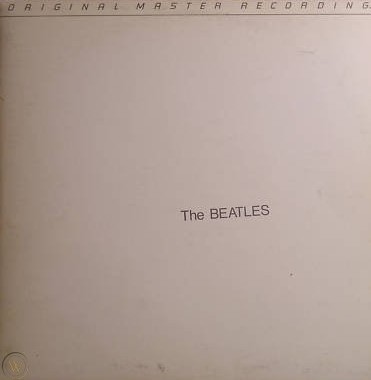 An interesting US vinyl edition of the “White Album” was released on January 7th, 1982, this being manufactured by Mobile Fidelity Sound Lab in Chatsworth, California as part of their "Original Master Recording" series. Their practice was to prepare a new master utilizing half-speed mastering technology from the original master tapes, in this case using the leased sub-master from Capitol Records. This release, which sounded superior to all previous British and American pressings, was packaged in a non-embossed unnumbered cover that did not include the usual poster/lyric sheet or individual Beatles portraits as contained in standard releases. This nonetheless excellent edition of the album was only available for a short time and is quite collectible today. An interesting US vinyl edition of the “White Album” was released on January 7th, 1982, this being manufactured by Mobile Fidelity Sound Lab in Chatsworth, California as part of their "Original Master Recording" series. Their practice was to prepare a new master utilizing half-speed mastering technology from the original master tapes, in this case using the leased sub-master from Capitol Records. This release, which sounded superior to all previous British and American pressings, was packaged in a non-embossed unnumbered cover that did not include the usual poster/lyric sheet or individual Beatles portraits as contained in standard releases. This nonetheless excellent edition of the album was only available for a short time and is quite collectible today.
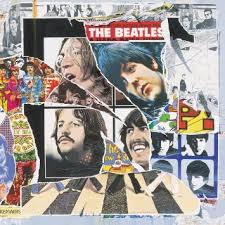 On October 28th, 1996, the compilation album “Anthology 3” was released, which featured the above mentioned consolidation of "take three," "take six" and "take nine" of the rhythm track of “I'm So Tired” as recorded on October 8th, 1968. On October 28th, 1996, the compilation album “Anthology 3” was released, which featured the above mentioned consolidation of "take three," "take six" and "take nine" of the rhythm track of “I'm So Tired” as recorded on October 8th, 1968.
 The CD box set “The Beatles In Mono” was released on October 9th, 2009, featuring the complete “White Album” in mono. This was the first time American shores got to hear this long-sought-after version of this classic album, “I'm So Tired” being included therein. The vinyl edition of this box set first came out on September 9th, 2014. The CD box set “The Beatles In Mono” was released on October 9th, 2009, featuring the complete “White Album” in mono. This was the first time American shores got to hear this long-sought-after version of this classic album, “I'm So Tired” being included therein. The vinyl edition of this box set first came out on September 9th, 2014.
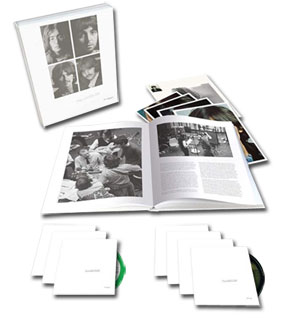 Various editions of the "White Album" were released on November 9th, 2018 to commemorate the 50th Anniversary of its original release. The "Deluxe" edition, which was made available in a 3CD set and a limited edition 180-gram 4LP vinyl set, contained the newly created Giles Martin mix of the "White Album," which included a vibrant new stereo mix of "I'm So Tired" as well as the original Esher demo recorded in May of 1968. The "Super Deluxe" 6CD + 1Blu-ray edition also includes both "take seven" and "take 14" from the original EMI session tape as they were recorded on October 8th, 1968. Various editions of the "White Album" were released on November 9th, 2018 to commemorate the 50th Anniversary of its original release. The "Deluxe" edition, which was made available in a 3CD set and a limited edition 180-gram 4LP vinyl set, contained the newly created Giles Martin mix of the "White Album," which included a vibrant new stereo mix of "I'm So Tired" as well as the original Esher demo recorded in May of 1968. The "Super Deluxe" 6CD + 1Blu-ray edition also includes both "take seven" and "take 14" from the original EMI session tape as they were recorded on October 8th, 1968.
Live Performances
After they last played around with the song in Twickenham Studios during rehearsals for what became the “Let It Be” movie as mentioned above, The Beatles never touched “I'm So Tired” again. Isn't it a pity?
Conclusion
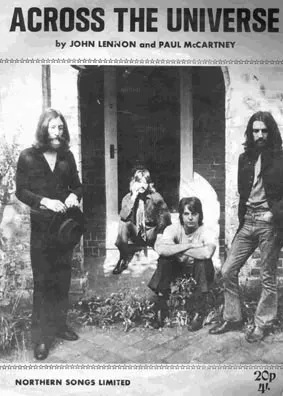 A lot of Beatles fans may find it intriguing that John Lennon viewed "I'm So Tired" among his favorite songs of his career. You would think that "Strawberry Fields Forever," "Help!" or "Across The Universe" would be at the top of his list, and you would be correct. He went on record at one time or another stating his affections for all three of these songs as well. However, he has also revealed his dissatisfaction about the recording of these three tracks, explaining that the end result was not what he intended, his vision for these songs being compromised in one way or another. A lot of Beatles fans may find it intriguing that John Lennon viewed "I'm So Tired" among his favorite songs of his career. You would think that "Strawberry Fields Forever," "Help!" or "Across The Universe" would be at the top of his list, and you would be correct. He went on record at one time or another stating his affections for all three of these songs as well. However, he has also revealed his dissatisfaction about the recording of these three tracks, explaining that the end result was not what he intended, his vision for these songs being compromised in one way or another.
 From listening to John's demo recording, which is the closest we can get to how he heard the song in his head, we can understand that, in this case, the finished track appeared to capture the mood and feel he was looking for and then some. He particularly liked the way his vocals were performed, something that he was known to have been especially critical about throughout his career with The Beatles. Throughout the years, he would be adamant about altering his voice during the recording process, speaking with George Martin and engineer Geoff Emerick regularly about whatever effects they could come up with that could be used to mask what he viewed as a deficiency in himself. So for John to say about “I'm So Tired,” “I just like the sound of it, and I sing it well” was saying a lot. And I think most fans would agree with him. From listening to John's demo recording, which is the closest we can get to how he heard the song in his head, we can understand that, in this case, the finished track appeared to capture the mood and feel he was looking for and then some. He particularly liked the way his vocals were performed, something that he was known to have been especially critical about throughout his career with The Beatles. Throughout the years, he would be adamant about altering his voice during the recording process, speaking with George Martin and engineer Geoff Emerick regularly about whatever effects they could come up with that could be used to mask what he viewed as a deficiency in himself. So for John to say about “I'm So Tired,” “I just like the sound of it, and I sing it well” was saying a lot. And I think most fans would agree with him.
Song Summary
“I'm So Tired”
Written by: John Lennon / Paul McCartney
- Song Written: March, 1968
- Song Recorded: October 8, 1968
- First US Release Date: November 25, 1968
- First US Album Release: Apple #SWBO-101 “The Beatles”
- US Single Release: n/a
- Highest Chart Position: n/a
- British Album Release: Apple #PCS 7067-7068 “The Beatles”
- Length: 2:01
- Key: A major
- Producer: George Martin
- Engineers: Ken Scott, Mike Sheady
Instrumentation (most likely):
- John Lennon - Lead and Background Vocals, Rhythm Guitar (1965 Epiphone ES- 230TD Casino), Organ (Hammond RT-3)
- Paul McCartney - Bass (1964 Rickenbacker 4001 S), Electric Piano (Hohner Pianet C), backing vocals
- George Harrison - Lead and Rhythm Guitar (1961 Sonic Blue Fender Stratocaster)
- Ringo Starr - Drums (1964 Ludwig Super Classic Black Oyster Pearl)
Written and Compiled by Dave Rybaczewski
|
IF YOU WOULD LIKE TO MAKE A DONATION TO KEEP THIS WEBSITE UP AND RUNNING, PLEASE CLICK BELOW!
Sign Up Below for our MONTHLY BEATLES TRIVIA QUIZ!
|